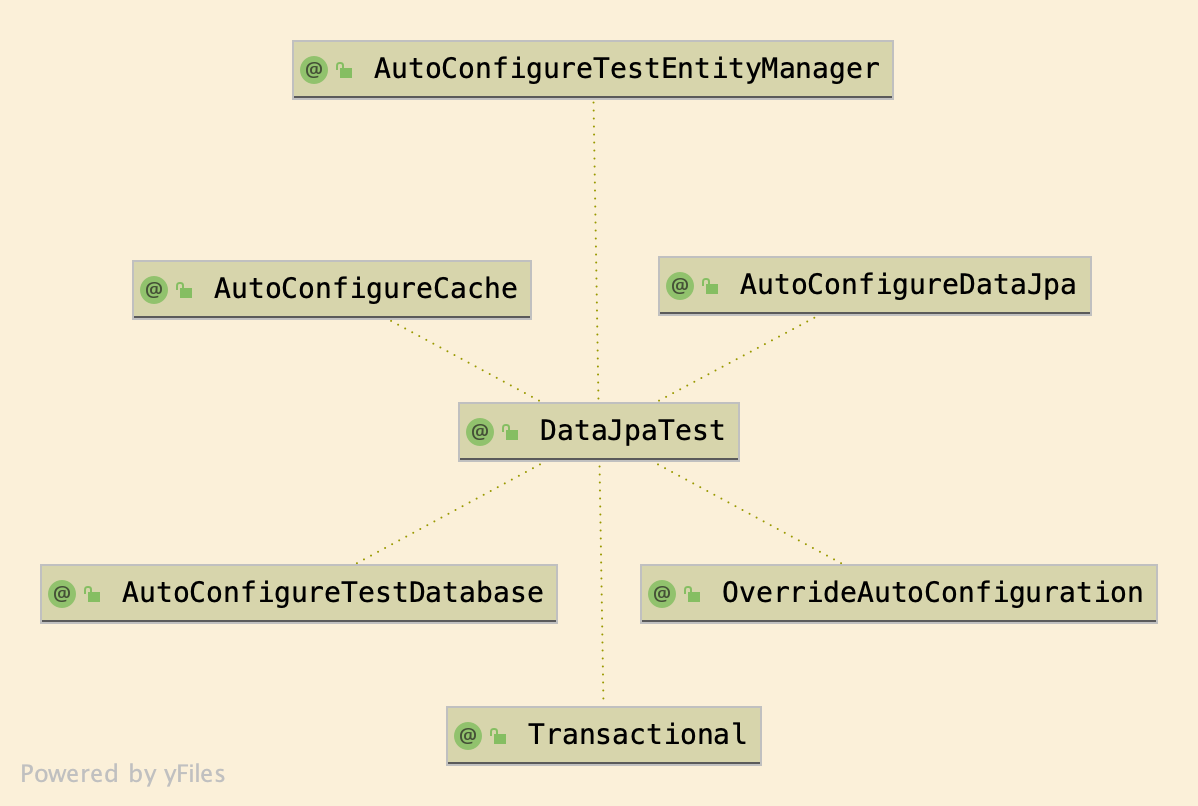With the Spring Framework you can configure which Beans (components) are loaded into the Application Context in different ways.
This is particularly useful for testing, loading all components of your application may not be necessary for certain types of test.
This article is about the case when you want to test your data access layer and at the same time:
- keep your tests independent from each other
- load a minimal set of components to the application context
Test dependencies
There are legitimate reasons to write test that depend on other tests. This article is about the case where you want test independence. Some of the associated problems of dependent tests are:
- running the test in different environments leads to different results
- unpredictable test results when multiple tests reuse the same data source
Using auto-configured JPA tests, enter @DataJpaTest
Spring provides the annotation @DataJpaTest, it will create a
“slice” which will ensure the test class only loads components relevant to the
execution of test involving JPA components and it’s dependencies.
Here’s a class diagram for the @DataJpaTest annotation:

The annotation packs lots of features:
- automated transaction management, provided by
@Transactional, transactions roll back at the end of each test - loads only JPA related components
- an auto-configured in-memory database ready for testing
- an
EntityManagerready for testing, it allows you to persist entities without having to use the@Repositoryinterface
Using the annotation is quite simple, here’s a small example, adapted from the Spring documentation:
@RunWith(SpringRunner.class)
@DataJpaTest
public class ExampleTransactionalTests {
@Autowired
private TestEntityManager entityManager;
@Autowired
private UserRepository repository;
@Test
public void testExample() throws Exception {
this.entityManager.persist(new User("sboot", "1234"));
User user = this.repository.findByUsername("sboot");
assertThat(user.getUsername()).isEqualTo("sboot");
assertThat(user.getVin()).isEqualTo("1234");
}
}Alternatives to auto-configured tests
Your own set-up and tear-down
You can always write your own set-up and tear-down methods to ensure every tests uses a data source in a pristine state, however it comes with trade-offs, namely:
- it’s code that you need to write and maintain
- test execution can be optimized to be faster
Destroy and re-create the application context
Spring also provides the annotation @DirtiesContext as a means to mark the
application context as “dirty”, Spring will recreate the context according to
your configuration – before/after each test/test class –. It also comes with
trade-offs, namely:
- re-creating the application context is expensive and your test will take longer
- there is no code that you have to maintain
References
- Application slices: Auto-configured JPA tests
- @DirtiesContext
Google search terms
@datajpatest site:docs.spring.iotest slice jpa site:docs.spring.io
